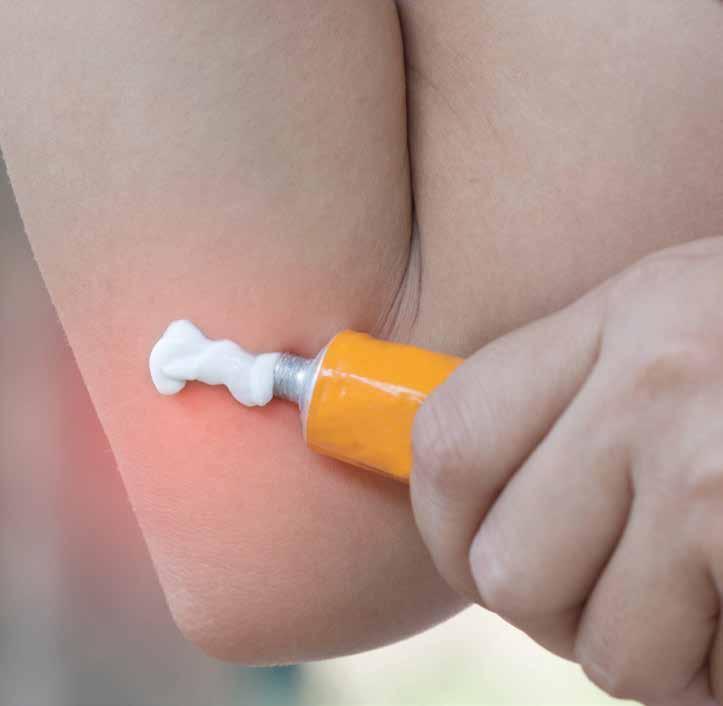
3 minute read
Nappy Rash
Ireland now has the highest birth rate in Europe and the baby retail market has shown positive growth. Pharmacies have significant advantages over supermarkets, mainly because pharmacy staff can offer advice and expertise that the supermarkets do not offer.
Nappy rash is one of the most common skin conditions in babies and it is also the most common skin problem in early childhood. Most children aged 0-3 years old develop nappy rash in some way and it is usually presents in babies from 6-8 months.
WHAT IS NAPPY RASH
Nappy rash can be caused by a number of factors including a combination of excess moisture, warmth, urine, faeces and friction in a baby’s nappy. It is a difficult environment for baby skin.
The nappy creates an enclosed area around the bottom and this increases warmth, moisture and encourages the growth of microorganisms that can cause infection. Chafing, due either to skin rubbing against the nappy, or from skin folds, can damage and irritate the skin and ongoing contact of the skin with urine, faeces or both, can lead to a formation of ammonia which can irritate a baby’s skin.
There is also a common link made between nappy rash and teething, as well as the transition to solid foods.
CAUSES AND TYPES
There are various causes of a nappy rash. Examine the rash and explain what type it is and how to treat it most effectively.
Nappy rash can occur a baby soils or wets itself and the nappy is left on for a longer time than usual, the urine and faeces can encourage the production of the chemical ammonia, which can irritate the baby’s skin, causing it to become sore and inflamed.
Where there has been close contact with the nappy, the baby’s skin will look red and inflamed. Most affected will be the genitals, the outer skin on the folds of thighs, and the bottom. The affected areas can appear either dry or moist, and look shiny or pimply.
The best way to treat this is to keep the bottom as clean and dry as possible and change nappies often. It’s also a good idea to apply a barrier ointment/cream or medicated powder after every change. of initial nappy rashand looks different. If the baby’s skin is warm and damp for long periods of time, it can cause the fungus ‘candida’, to grow. Like ammonia, candida can irritate the baby’s skin. The area of skin will be inflamed, with spots around the edges. The infection will be bright red and also present in the folds of the skin.
Severe Nappy Rash
If a patient’s baby has severe or reoccurring nappy rash, they should be advised to visit their GP as it will usually require prescribed medication. Nappy rash should clear up within a few days of over the counter treatment. There are a number of treatments for severe nappy rash.
Corticosteroids help to reduce the inflammation of the skin and relieve any itching and redness.
Hydrocortisone cream, which should only be applied once a day should not be used for more than seven days
An anticandidal medicine helps to treat any fungal infection that may cause a rash. Some commonly prescribed anticandidal medicines include: Clotrimazole, econazole, ketoconazole, miconazole and nystatin.










